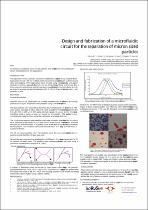 ResearchSpace
ResearchSpace
Laser-based assessment of road aggregate particle shape and texture properties with the aim of deriving comparative models
JavaScript is disabled for your browser. Some features of this site may not work without it.
- ResearchSpace
- →
- Research Publications/Outputs
- →
- Journal Articles
- →
- View Item
| dc.contributor.author |
Breytenbach, IJ

|
|
| dc.contributor.author |
Anochie-Boateng, Joseph

|
|
| dc.contributor.author |
Paige-Green, P

|
|
| dc.contributor.author |
Van Rooy, JL

|
|
| dc.date.accessioned | 2014-02-19T07:49:38Z | |
| dc.date.available | 2014-02-19T07:49:38Z | |
| dc.date.issued | 2013-10 | |
| dc.identifier.citation | Breytenbach, I.J, Anochie-Boateng, J.K, Paige-Green, P and Van Rooy, J.L. 2013. Laser-based assessment of road aggregate particle shape and texture properties with the aim of deriving comparative models. Journal of the South African Institution of Civil Engineering, vol. 55(3), pp 30-35 | en_US |
| dc.identifier.issn | 1021-2019 | |
| dc.identifier.uri | http://www.scielo.org.za/scielo.php?pid=S1021-20192013000300004&script=sci_arttext | |
| dc.identifier.uri | http://hdl.handle.net/10204/7226 | |
| dc.description | Copyright: 2013 South African Institution of Civil Engineering. This is the post print version of the work. The definitive version is published in Journal of the South African Institution of Civil Engineering, vol. 55(3), pp 30-35 | en_US |
| dc.description.abstract | Research was undertaken using an innovative three-dimensional (3D) laser scanning tool to study the shape and texture characteristics of road aggregate particles. Aggregate materials used for road construction, including G1 crushed rocks of different geological origins, recycled aggregate and alluvial gravel (not used as aggregate) were used for this study. Representative samples were scanned using the laser system to collect 3D aggregate data for analyses and, subsequently, develop comparative models. The objective was to arrange the aggregate particles in a sequence based on their surface texture. Two models were proposed and key aspects evaluated against each other. Ultimately, one model was selected that may be improved and used for further research. The study found that, while it is possible to use the 3D aggregate scan data to produce comparative models, distinguishing between particle shape and texture proved a daunting task. It was also concluded that particle elongation must be considered as a major influencing factor. | en_US |
| dc.language.iso | en | en_US |
| dc.publisher | South African Institution of Civil Engineering | en_US |
| dc.relation.ispartofseries | Workflow;12159 | |
| dc.subject | Road aggregate | en_US |
| dc.subject | Laser scanners | en_US |
| dc.subject | Particle textures | en_US |
| dc.subject | Particle modes | en_US |
| dc.subject | Particle shapes | en_US |
| dc.subject | Road aggregate particle shape | en_US |
| dc.title | Laser-based assessment of road aggregate particle shape and texture properties with the aim of deriving comparative models | en_US |
| dc.type | Article | en_US |
| dc.identifier.apacitation | Breytenbach, I., Anochie-Boateng, J., Paige-Green, P., & Van Rooy, J. (2013). Laser-based assessment of road aggregate particle shape and texture properties with the aim of deriving comparative models. http://hdl.handle.net/10204/7226 | en_ZA |
| dc.identifier.chicagocitation | Breytenbach, IJ, Joseph Anochie-Boateng, P Paige-Green, and JL Van Rooy "Laser-based assessment of road aggregate particle shape and texture properties with the aim of deriving comparative models." (2013) http://hdl.handle.net/10204/7226 | en_ZA |
| dc.identifier.vancouvercitation | Breytenbach I, Anochie-Boateng J, Paige-Green P, Van Rooy J. Laser-based assessment of road aggregate particle shape and texture properties with the aim of deriving comparative models. 2013; http://hdl.handle.net/10204/7226. | en_ZA |
| dc.identifier.ris | TY - Article AU - Breytenbach, IJ AU - Anochie-Boateng, Joseph AU - Paige-Green, P AU - Van Rooy, JL AB - Research was undertaken using an innovative three-dimensional (3D) laser scanning tool to study the shape and texture characteristics of road aggregate particles. Aggregate materials used for road construction, including G1 crushed rocks of different geological origins, recycled aggregate and alluvial gravel (not used as aggregate) were used for this study. Representative samples were scanned using the laser system to collect 3D aggregate data for analyses and, subsequently, develop comparative models. The objective was to arrange the aggregate particles in a sequence based on their surface texture. Two models were proposed and key aspects evaluated against each other. Ultimately, one model was selected that may be improved and used for further research. The study found that, while it is possible to use the 3D aggregate scan data to produce comparative models, distinguishing between particle shape and texture proved a daunting task. It was also concluded that particle elongation must be considered as a major influencing factor. DA - 2013-10 DB - ResearchSpace DP - CSIR KW - Road aggregate KW - Laser scanners KW - Particle textures KW - Particle modes KW - Particle shapes KW - Road aggregate particle shape LK - https://researchspace.csir.co.za PY - 2013 SM - 1021-2019 T1 - Laser-based assessment of road aggregate particle shape and texture properties with the aim of deriving comparative models TI - Laser-based assessment of road aggregate particle shape and texture properties with the aim of deriving comparative models UR - http://hdl.handle.net/10204/7226 ER - | en_ZA |








